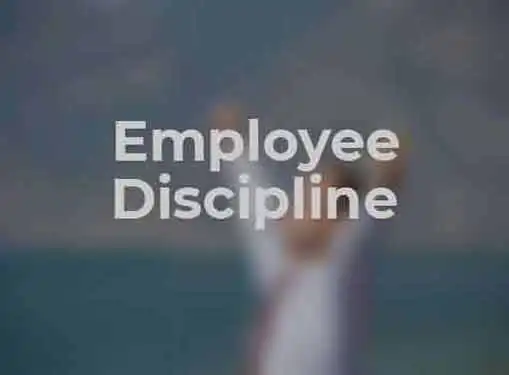Managing Employees
Employee Discipline Kit
Does it seem like you're constantly reinventing discipline letters and procedures? If so, you're wasting a lot of time unnecessarily. A simple employee discipline kit has everything you need for effective and consistent employee discipline.
Most small businesses can't afford a dedicated HR department.

So when it comes to employee discipline, owners and managers are usually stuck carrying the ball. The result is a mish-mash of policies and forms that bear little resemblance to a tightly executed employee discipline strategy.
But lack of uniformity in disciplinary procedures is more than a simple operational issue. If disciplinary actions vary from one worker to the next, your company has significant legal exposure. When it comes to employee discipline, it's imperative to get everyone on the same page ASAP.
An employee discipline kit standardizes forms, letters and processes throughout your organization. Instead of re-creating letters for every disciplinary situation, supervisors can rely on templates and other resources to streamline employee discipline and to apply discipline more consistently. Here are some of items you'll want to include in the employee discipline kit you create for your business.
- Discipline policies. It's helpful to include copies of the employee handbook's current discipline and performance policies in your kit. Supervisors and managers should be responsible for complying with written discipline policies. The inclusion of these policies in the kit serves as both a reference and a subtle reminder that they are not free to exercise discipline outside of policy parameters.
- Evaluation forms. Although performance reviews aren't technically part of an employee discipline process, the two are connected, especially for an underperforming employee. It's not absolutely vital to include blank evaluation forms in the employee discipline kit, but it can be useful.
- Disciplinary forms. The bulk of an employee discipline kit is comprised of disciplinary form templates including disciplinary action forms, disciplinary notices and employee probation agreements. The standardization of these forms should be your highest priority because they play a central role in defining the discipline process and shaping how discipline is meted out in your organization.
- Warning letters. First and second warning letters are the eventual outcome of unsuccessful attempts to improve employee behavior or performance. This is where the discipline process takes a decidedly legal turn, so make sure your letters have been vetted by legal counsel and are used religiously by managers.
- Termination forms. If all else fails, your company will be forced to terminate non-performing employees. Many supervisors may not have the authority to terminate an employee, but those who do need to be intimately acquainted with termination policies and be equipped with termination form templates in the employee discipline kit.
Share this article
Additional Resources for Entrepreneurs





Conversation Board
We greatly appreciate any advice you can provide on this topic. Please contribute your insights on this topic so others can benefit.